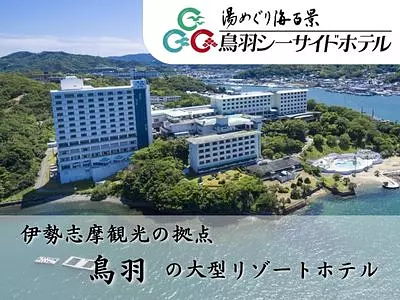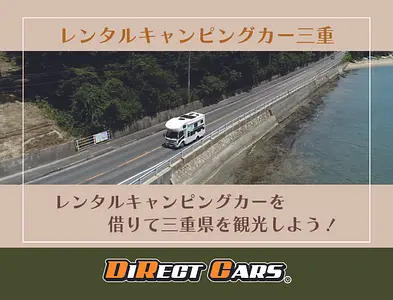Ama divers in Toba and Shima have been practiced since ancient times. “I want to live with the ocean tomorrow too.”
Ise-Shima is an area designated as a national park, with lush inland greenery and a beautiful ria coastline. Among them, TobaCity and ShimaCity in particular are areas with thriving fishing industries and are blessed with an abundance of seafood. ``Ama divers'' are essential when talking about the fishing industry in Toba and Shima. Why has the ama culture continued since ancient times, and how can we protect the sea and the ama in the future?

What are the Ama divers of Toba and Shima?

The sea of the Shima Peninsula is a mixture of the seawater of Ise Bay and the Kuroshio Current, which receives abundant nutrients and nurtures many marine blessings.
The Ama divers of Toba and Shima use this area as a fishing ground.
Ama are women who make a living by free diving to catch abalone, turban shells, and seaweed.Currently, there are approximately 514 ama divers active in this area (according to a 2022 survey by the Sea Museum).
Ama divers have a long history, and tools made from abalone shells and deer horns have been excavated from the Shirahama ruins in Ura Village, TobaCity during the Yayoi period, and the Manyoshu also mentions ama fishing. The fact that there are poems written about the situation shows that Ama divers have been passed down from ancient times to the present day.
Furthermore, ever since IseJingu was enshrined, the depth of its history is evidenced by the fact that noshi abalone taken by the Ama divers of kuzakicho, TobaCity City has been presented as a sacred offering to the shrine.

old style fishing
When Ama fish, they dive into the sea using only their own breath, without using oxygen tanks, and spend about one minute searching for and catching prey.
Their prey includes abalone, turban shell, tokobushi, spiny lobster, sea urchin, and seaweed.

(An example of seafood caught by Ama divers. Ise lobster is only caught by Ama divers in some areas.)
If you look at the tools and equipment used for fishing, they are quite simple, and although the materials may have been modernized, the style has hardly changed from the past to the present.
For example, a key chisel is used to peel abalone from stones and rocks. A chisel with one end curved in the shape of a hook, it can be said to be an indispensable tool for Ama fishing, but the chisel used today still retains its original appearance.
``Do not catch too much'' Ama fishing
We understand that ama fishing has a long history, but how has it been sustained for so long?
One of the reasons for this is that Ama divers had rules and ingenuity to avoid exhausting their prey.
Ama divers have a history of often facing the crisis of resource depletion.
The increase in the population of ama divers and the expansion of the fishing season led to overfishing, leading to poor catches, and it is said that during the Edo period, ama divers were conscious of preventing the depletion of resources.

For example, around the beginning of the Meiji period, glass underwater goggles were developed, but the use of underwater goggles caused problems such as catching too much abalone, and since then many fishing villages have banned their use for nearly 10 years. did.
It is with this awareness in mind that I continue to practice free diving even today.
In addition, for safety reasons, we recommend that you do not take small abalone smaller than 10.6 cm, that you limit your diving time to 1 hour or 1 hour and 30 minutes, and that you have a fair chance of diving on a fishing day for safety reasons. There are many rules, such as not going fishing on other days.
From these facts, we can see that since ancient times, Ama divers have used their wisdom and devised ways to continue fishing in the future, rather than simply harvesting existing resources.
Various exhibits and materials related to Ama, including the tools they use for fishing, can be seen at TobaCity Sea Museum.

Interview with active ama divers about changes in the sea

The culture of Ama divers continues to this day.
One of the active Ama divers, Ms. Yamashita, was born and raised in the Goza area of ShimaCity Shima City, and is a veteran Ama diver with 48 years of experience.
``Ever since I was in the early grades of elementary school, when I got home from school, I would go to the fields, pick up tomatoes, eggplants, and other vegetables, and run to the sea.I would float the vegetables in the sea, swim for a while, and when I got hungry, I would eat them. I took turns eating them and doing that. Then, I learned how to swim by watching the upperclassmen do the same thing."
Mr. Yamashita laughs and says that he loves the sea.
Ms. Yamashita, who has been familiar with the sea since childhood and has many years of experience as an ama diver, talked about recent changes in the sea environment.

``Over the past six years, as the Kuroshio Current has continued to meander, the ocean has become deserted (a significant decrease or disappearance of seaweed, resulting in a decline in the number of living creatures such as abalone and turban shells), and the ocean is no longer as teeming with life as it was in the past. The whole area was white like a desert.''
It is said that the Kuroshio Current's large meander usually ends within one to several years, but this is a rare occurrence. Of course, fishing will not be as successful in a sea without catch.

Activities of Ama divers to protect the sea
Seaweed plays a major role in the sea, which is the fishing ground for Ama divers.
Seaweed is the food for their prey, such as abalone, turban shell, tokobushi, and sea urchin. Therefore, in the sea where seaweed does not grow, these creatures disappear because there is no food.
In addition, even if a big wave comes, thick seaweed would normally dampen the force, but in a sea without seaweed, the impact is immediate and dangerous, so there are more days off from fishing. It is said.
"I've been diving in the ocean 365 days a year, so I can immediately see the difference in the ocean with my own eyes. Even the water temperature in the ocean in winter is clearly warmer than in the past."
Due to these changes in the sea environment, Ama divers from all over the country are taking measures such as exterminating the sea urchins (a type of sea urchin that eats seaweed) that occur due to rising water temperatures, and releasing seaweed seeds and young shellfish. In addition to going fishing, we are also working to protect the marine environment, such as sharing information from each region at the Ama Summit.
"If we don't do anything, the situation will only get worse and worse, so if someone doesn't do something," he said.

At the ``Ama Garden,'' where Yamashita-san and other active ama divers are present, you can enjoy seafood from Toba and Shima, including abalone and spiny lobster, grilled right in front of your eyes.

(Ama's garden full course - full course of spiny lobster and abalone)
"I was thinking of retiring and relaxing, but I was surprised to see the amount of ama caught last year. It's less than one-tenth of what it was when the sea conditions were good. I can't go to the sea anymore. I thought there was a need for a place where Ama divers could be active.In the meantime, if the sea conditions improve, I would like to return to the sea as an Ama diver.After all, I love the sea.''
Ms. Yamashita speaks emphatically that she wants to utilize her past experience and work together to somehow protect the sea so that her juniors can continue to fish as ama divers.
I could see her desire to continue being an ama diver in the sea she loves, and to ensure that ama fishing continues to prosper for many years to come.

basic information
TobaCity Sea Museum
[Address] 1731-68 Daikichi TobaCity Mie Prefecture, 517-0025
[Telephone] 0599-32-6006
[HP] http://www.umihaku.com/
【business hours】
March 1st - November 30th 9:00-17:00
December 1st to the end of February 9:00 to 16:30
(Last entry is 30 minutes before closing)
Ship storage facility tour until 16:00
[Closed days] June 26th to June 30th, December 26th to December 30th
[Fee] Adults (18 years and older): 800 yen, University students and younger: 400 yen
Ama's garden
[Address] 40-2 Goza, Shimacho ShimaCity Mie Prefecture, 517-0705
[Telephone] 0599-77-5731
[HP] https://ama-iseshima.com/
| Category | |
|---|---|
| season | |
| area |



